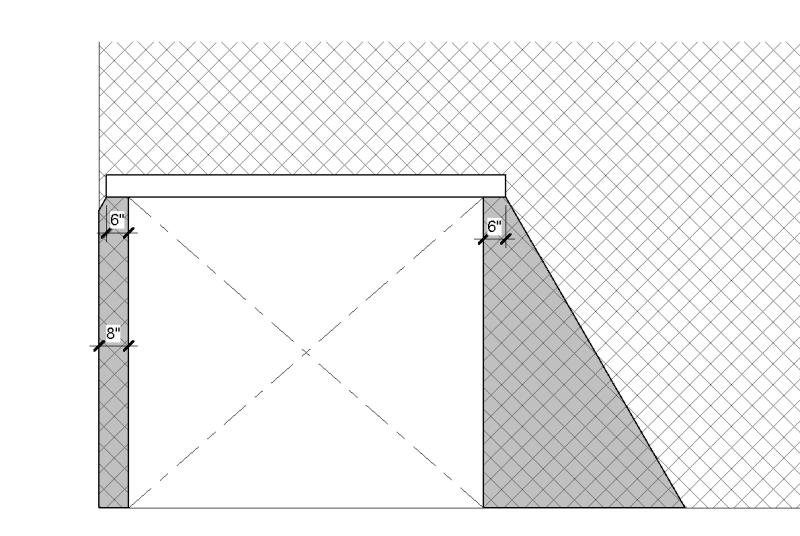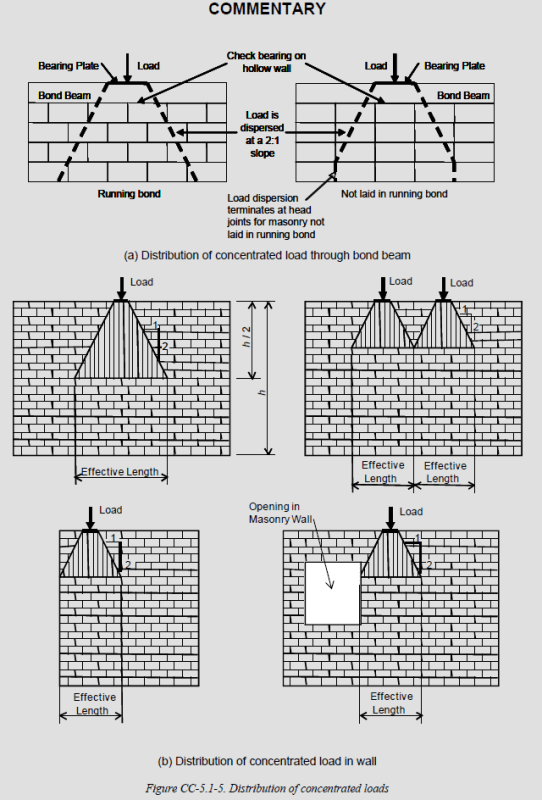MJC6125
Structural
- Apr 9, 2017
- 120
For brick veneer in stack bond, is there any reason I should be concerned with using a loose lintel schedule at face value as it relates the end bearing of the loose lintels?
I understand that the brick above an opening can't corbel in stack bond, so I have to design the lintel for all the weight of the masonry above. However, I'm wondering if I should be taking any precautions due to the fact that the end reaction of the loose lintel also will not corbel into the rest of the veneer wall?
See the image below as an example. If I had an 8" wide brick column on one side of an opening and had running bond masonry veneer, I would think twice about whether that loose lintel is a good idea or not. That's basically what you have at every opening in stack bond.

I assume we are good because the brick bearing length is checked based on the compressive capacity of the brick, and the brick shouldn't buckle or fail due to combined bending & axial like a column because it is tied back to the structural wall continuously?
I understand that the brick above an opening can't corbel in stack bond, so I have to design the lintel for all the weight of the masonry above. However, I'm wondering if I should be taking any precautions due to the fact that the end reaction of the loose lintel also will not corbel into the rest of the veneer wall?
See the image below as an example. If I had an 8" wide brick column on one side of an opening and had running bond masonry veneer, I would think twice about whether that loose lintel is a good idea or not. That's basically what you have at every opening in stack bond.

I assume we are good because the brick bearing length is checked based on the compressive capacity of the brick, and the brick shouldn't buckle or fail due to combined bending & axial like a column because it is tied back to the structural wall continuously?

